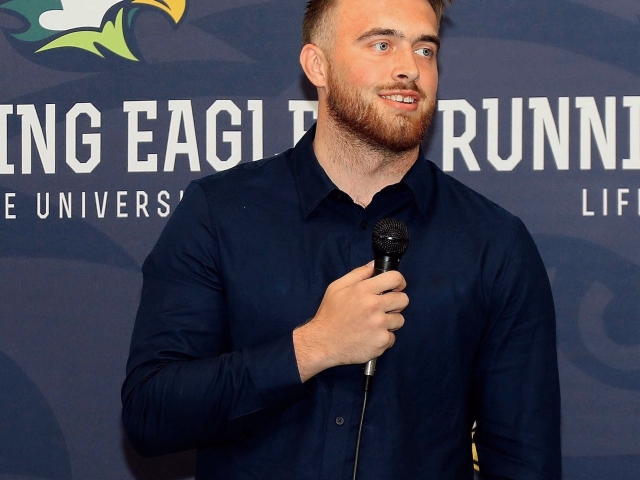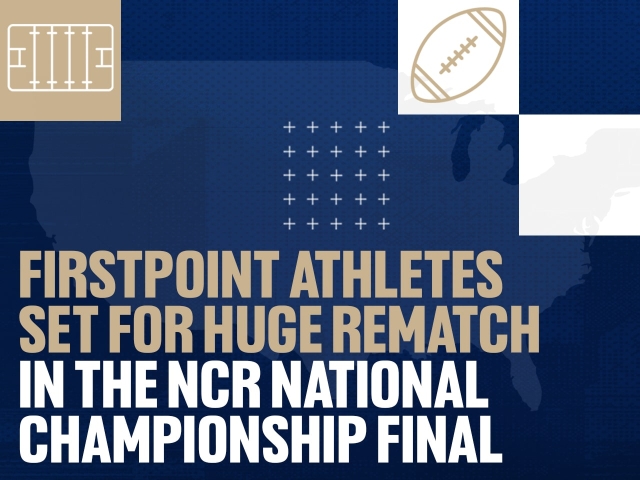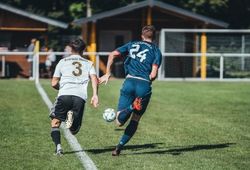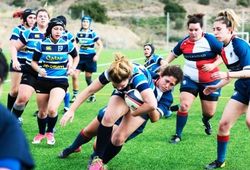Written by Ross Duncan, Chief Marketing Officer at FirstPoint USA and former Development Director at Scottish Golf.
A golf scholarship in the USA is a well-trodden path that has paved the way for some of the world’s best golfers, but with a vast array of options available for talented international golfers to elevate their game, you don’t have to be the next Scottie Scheffler or Rose Zhang to forge a successful collegiate golf career.
The landscape of American college golf is vast and right across the country, you can find world-class facilities, top level competition, great coaches and that all important good weather factor which can provide you with the draw of playing and studying abroad.
As the collegiate golf season reaches a conclusion this month, our latest blog takes a look at the key factors required to be considered for a golf scholarship in the States, and what players should be doing to ready themselves for a shot at the big time and catching the eye of college coaches.
Being Open to Options
While NCAA Division 1 often captures the spotlight, and for good reason, it's crucial to understand that numerous other excellent opportunities exist within the National Association of Intercollegiate Athletics (NAIA) and NCAA Divisions 2 and 3. Many talented golfers who didn't initially secure a Division 1 spot have thrived at these levels, benefiting from being part of an excellent program, top-class coaching and stiff competition, subsequently going on to achieve significant success on the national amateur stage and onto the professional ranks.
So, what kind of performance levels are we talking about? While each coach's specific requirements can vary, some general benchmarks and guidelines exist:
Men's Golf:
- NCAA Division 1: Typically, players will need a handicap of scratch or better (0 or lower) and consistently shoot tournament rounds in the low 70s or even high 60s. The top programs will look for players with national and international amateur experience and will be judging players on their performances in major events and their consistency in national and international rankings.
- NCAA Division 2: A handicap between +2 and 4, with consistent scores in the mid-70s, is often a good starting point, with good performances in county and regional tournaments.
- NCAA Division 3 & NAIA: Players with handicaps ranging from 4 to 10 showing good potential for improvement and scoring averages in the high 70s to low 80s can still find opportunities at these levels.
Women's Golf:
- NCAA Division 1: Generally, a handicap of 4 or better and consistent tournament scores in the mid-to-low 70s are expected. Like the men's game, experience in high-level national and international amateur events is a significant advantage, with the top programs looking for good performances in the big events and building up ranking points.
- NCAA Division 2: Players with handicaps between 4 and 8 and scoring averages in the high 70s to low 80s are often competitive at this level.
- NCAA Division 3 & NAIA: Handicaps ranging from 8 to 15 with good potential and consistent scores in the low to mid-80s can open doors to these programs.
It's important to remember that these are general guidelines, and coaches consider a multitude of factors beyond just scores and handicap. They are looking for well-rounded individuals with a strong work ethic, a positive attitude, coachability, and a genuine passion for the game. Academic performance and character are also crucial aspects of the recruitment process.
Getting Yourself in the Best Position for Recruitment:
For aspiring collegiate golfers, proactive steps are essential to maximize your chances of securing a scholarship. Working with an agency such as FirstPoint USA can be very beneficial, tapping into our expertise and experience, but the following factors are also crucial in beginning your journey:
- Excel Academically: Strong grades and test scores (SAT/ACT) are crucial. Universities are looking for student-athletes, not just talented golfers. You’ll need to continue practicing hard on the course, but it’s vitally important to study hard too and gain as good grades as you can. We know studying is hard when the weather is good and you’re desperate to get out on the course, but its short-term pain for long term gain!
- Perform Well in the Big Tournaments: Winning your local medal is great, but coaches are looking for results in the big events. Focus on playing in county/regional and national amateur events that you can get into, as well as Junior Tours with strong fields.
- Build a Detailed Golf Resume/Profile: Include your academic achievements, tournament results, handicap history, swing videos, and any other relevant information.
- Create Highlight Videos: Showcase your swing, course management skills, and tournament play (see note below).
- Contact Coaches Directly: Research universities that align with your athletic and academic goals and reach out to their golf coaches with your resume and highlight video. Be persistent and professional.
- Consider Utilizing Recruiting Services: Organizations like FirstPoint USA can provide invaluable guidance and connect you with college coaches.
- Be Proactive and Patient: The recruitment process can take time, so start early and be prepared to follow up.
Filming your Swing – What a Coach is Looking For
Particularly for international golfer, a coach may not have the opportunity to watch you live, albeit coaches will try and visit some of the major international amateur events during the summer season. While there’re nothing quite like watching how a player performs in person, compiling a swing video film and integrating into your profile can be very beneficial, and allow a coach to study the technical aspects of your game.
A good profile video should be around 10 minutes long, covering the different aspects of your games, with different clubs, including:
· Your swing with key clubs: driver, fairway wood, long iron, mid iron, short iron.
· Show different angles – down the line and face on.
· Short game – bunker shots, chipping, pitching, knock down shots.
· Putting – long, medium and short putts, using different angles.
You can utilise a professional videographer or ask a friend or family member to film it for you using a good smartphone camera.
Speak to Current or Former College Golfers
To gain a clearer understanding of the playing level required for securing a college golf scholarship in the United States, aspiring international golfers should proactively engage with those who have firsthand experience. Within your existing golfing network, whether at your local club, county, or national program, or even at the various tournaments you participate in, there are likely individuals who have navigated the college golf recruitment process. Current student-athletes and college golf alumni can offer invaluable insights into the standard of competition you'll encounter in the States and the general expectations of college coaches. They can also share their personal experiences with different programs, providing a realistic picture beyond just rankings and statistics.
It's crucial to do your homework to identify the level of college golf that aligns with your current abilities and potential for growth. Don't hesitate to ask these experienced players about their scoring averages in college events, the types of tournaments that college coaches pay attention to, and the importance of factors beyond just on-course performance, such as academics and character. Understanding the landscape of scholarships available at different divisions, the academic requirements you'll need to meet, and the recruiting timelines is essential for setting realistic targets. By leveraging the knowledge of those who have successfully made the transition to college golf, you can gain a significant advantage in your pursuit of a golf scholarship and ensure you are aiming for programs where you can thrive both athletically and academically.
Next Steps
The facilities available to college golfers in the USA are often exceptional. Universities invest heavily in their golf programs, providing access to pristine practice grounds, state-of-the-art swing analysis technology, well-maintained golf courses, and dedicated coaching staff. This environment fosters rapid development and allows athletes to hone their skills in a professional setting.
The strength of competition in US college golf is undeniable. Players are constantly challenged against some of the best amateur golfers in the world, pushing them to improve and perform under pressure. The collegiate calendar is packed with various tournaments, ranging from individual stroke play events to team match play competitions. These include conference championships and prestigious national championships at different divisional levels, offering invaluable experience in diverse competitive formats.
A golf scholarship in the USA offers a unique and transformative experience for talented young golfers. With dedication, hard work, and a strategic approach to the recruitment process, the dream of competing at a high level while pursuing academic goals can become a reality. The pathway is there, the facilities are exceptional, and the competition will elevate your game – are you ready to tee off?
Register your interest with FirstPoint USA today to make the first move on your college golf journey.




